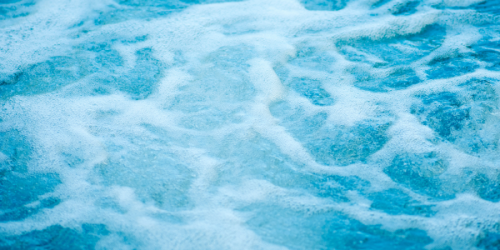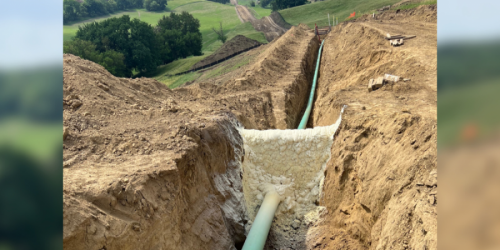Q&A Forums
Crawlspace Insulation--Foam Questions Post New Topic | Post Reply
| Author | Comments |
|---|---|
|
Posted: Sep 14, 2010 07:21 AM
|
Crawlspace Insulation--Foam Questions
We're completing a new build in NY State: house sits on 2000sf crawlspace of which approx 2/3 nom 6' height, 1/3 @4' height. We have taken good care to prevent moisture infiltration, but the area is still damp/clammy, esp in the shoulder months (house about to be insulated and hvac not yet operating). The crawlspace is only accessible from the outside via bulkhead door (no connection or stairs from inside the house). We have decided to insulate and partially condition this space (meaning to maintain ±55-60º year-round). The house hvac is installed, and has no air supplies or returns to the crawlspace (we maxed out the cfms of the unit with the house). This raises some questions: 1) We're planning to use 2" closed cell spray foam on rim joist and all the way down the basement/crawlspace walls. The slab floor was not insulated, but it has an excellent vapor barrier. I have read that the rim should not be completely covered by foam--to leave a small area for visual termite inspection *and* for any vapor drive issues that might come from outside. But I cannot find specific details abt where that gap shd be, and how to achieve it? 2) Since this is crawlspace (never planned for living), and only accessible from the outside, will firestop (intumescent paint) be necessary over the foam to meet code? Our AHJ does not have much experience with this type of insulation and we have a good relationship--so he requests I give him details as published and will accept that as the standard. 3) To partially condition the space, we want to install an energy efficient unit to keep temp at ±55º and humidity at <40% year-round. Is there a combo unit that will do that? We're looking at better dehumidifiers made for lower temp environments, but they're expensive and use a lot of electricity. Our hvac sub proposed a minisplit heat pump for both heating and dehumidification, but it seems most are set up for cooling which is not what we need, and the heating we will need will likely occur in the coldest months of winter, when the heatpump will prob not be efficient. We have propane and can use that for heating, but that means two different systems to control the temp/humidity. So the question is, is there an hvac unit that can operate in these conditions with high efficiency? 4) Lastly, we are concerned abt cold floors on the first floor of the house. Wd it make sense to do some insulating under that floor? We can spec open cell, closed cell, or blown-in mineral wool in every joist bay that's not occupied by hvac supplies and returns. I am thinking that 1" of closed cell wd slow transfer of heat and provide some sound deadening at nominal upchg, b/c it can't be used everywhere. But I don't know how that will affect wood floors above, for example. The mineral wool and open cell will allow some perming--is that good or bad in this application? In all the houses I've built over the years, never have I given so much consideration to the non-living, partially conditioned spaces. But it seems as everything1 else gets tightened up, the requirements in this area increase, too. Thanks so much all for feedback. Best, Mark |
|
Daniel X
Posted: Sep 14, 2010 10:03 PM
|
I'm only going to comment on spraying to the underside of the subfloor between joists. This is NOT going to provide sound deadening, you are coupling everything together even tighter, in order to cut down on sound you need to de-couple and absorb. |
|
mason
Posted: Sep 15, 2010 08:13 AM
|
You nave 4 questions to answer 1. Reducing moisture levels in the crawl space 2. Thermal or ignition barrier requirements 3. Sound absorbing qualities of sprayfoam 4. What type of HVAC equipment to place in the crawl space? 1. Rducing moisture levels. Lets make it simple. There are 3 ways to reduce moisture levels in a space. Limit the water and moisture that enters the space. Direct the water out of the space, and/or ventilate to evaporate water that might condense. In this case you need to find where the water is coming from? Is there a drainage tile system in place? Are the foundation walls allowing water to seep in? If not, then the moisture is coming from the ground and from the outside. Place a plastic sheet on the ground and spray foam up to it and to the underside of the floor, then add ventilation to the space. This will isolate the crawl space from the rest of the inhabited space. Check out design details at buildingscience.com and read about basements and crawlspaces. I can send you the articles when I am back in my office next week. email me at masonknowles@aol.com 2. Ignition barriers; Read the thread on the thermal barrier forum about this same topic. The codes are not clear on this issue. Many of us do not believe this is a hazard if there are no utilities in the crawl space, but your code official may insist on an ignition barrier anyway. 3. Sound absorbing qualities of sprayfoam: Closed cell spray foam does not have good sound absorbing qualities but can seal cracks and crevices that sound can be transmitted through. Most of your noise from outside sources come via airborne sources, so sprayfoam would help those types noises. It would not help against vibration type noises. 4. Termite gaps. These are required in southern climates but not in northern climates. You have the gap on the outside of the foundation wall not the inside. 5. HVAC equipment: I would contact a HVAC contractor that is well versed in sprayfoam applications for their assistance. Some form of hygrothermal modeling would be helpful in determing how best to vent the space. Remember it is not important to maintain a specific humidity and temperature in the crawl space, just not to allow condensation that could deteriorate building materials and come into the living space. |





























